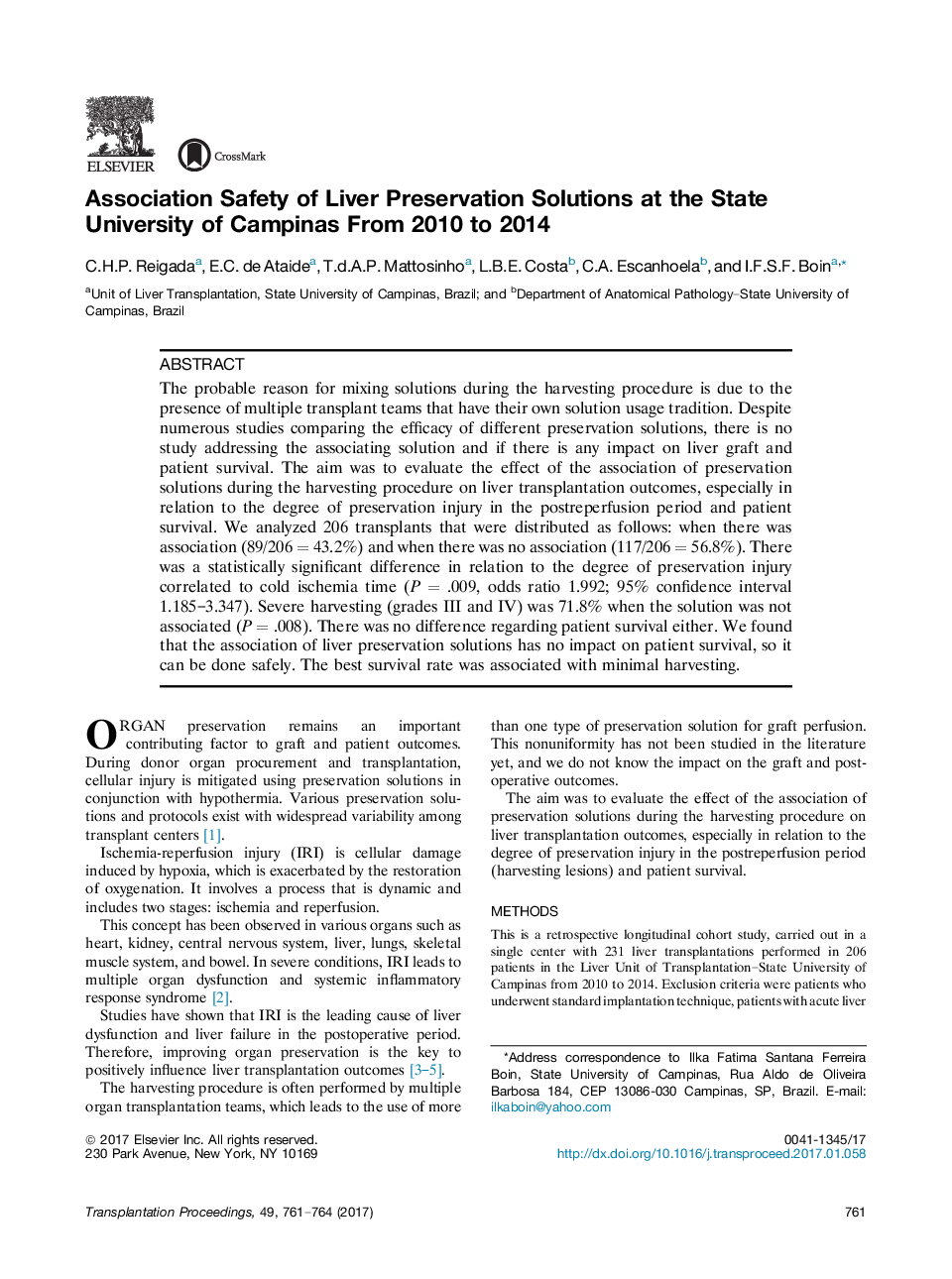| Article ID | Journal | Published Year | Pages | File Type |
|---|---|---|---|---|
| 5728929 | Transplantation Proceedings | 2017 | 4 Pages |
Highlightâ¢In undeveloped countries, the blending of preservation solutions can be used.
The probable reason for mixing solutions during the harvesting procedure is due to the presence of multiple transplant teams that have their own solution usage tradition. Despite numerous studies comparing the efficacy of different preservation solutions, there is no study addressing the associating solution and if there is any impact on liver graft and patient survival. The aim was to evaluate the effect of the association of preservation solutions during the harvesting procedure on liver transplantation outcomes, especially in relation to the degree of preservation injury in the postreperfusion period and patient survival. We analyzed 206 transplants that were distributed as follows: when there was association (89/206Â = 43.2%) and when there was no association (117/206Â = 56.8%). There was a statistically significant difference in relation to the degree of preservation injury correlated to cold ischemia time (PÂ = .009, odds ratio 1.992; 95% confidence interval 1.185-3.347). Severe harvesting (grades III and IV) was 71.8% when the solution was not associated (PÂ = .008). There was no difference regarding patient survival either. We found that the association of liver preservation solutions has no impact on patient survival, so it can be done safely. The best survival rate was associated with minimal harvesting.
